Road safety
Pedestrian Access and Mobility Plan (PAMP)
On 20 July 2021 Council resolved to adopt the PAMP. A PAMP is a comprehensive strategic action plan to coordinate investment in safe, convenient, and connected pedestrian infrastructure. For further information visit Collaborate Canada Bay.
Bike Plan
The City of Canada Bay is currently developing a new bike plan to identify and plan the delivery of cycling infrastructure to meet the current and future needs of bike riders. For more information please click here.
Road safety
A Road Safety Officer has been appointed to the City of Canada Bay, in partnership with Transport for New South Wales (TfNSW). This position is responsible for the strategic development of the local road safety programs and events in our community.
Local road safety issues are identified through analysis of local crash data provided by TfNSW, and through consultation with residents, police, schools, and other stakeholders.
For more details and road safety tips please select a topic below.
The City of Canada Bay offers a free child car seat fitting service for our residents. We hold six events per year, hosted by Authorised Restraint Fitters. There are limited spots, and bookings are essential.
When: The last Tuesday of every second month 10am–2pm
Where: Cintra Park Netball Courts Car Park (Entry via Crane Street), Concord NSW, 2137
Click here to book your free spot.
To find out more contact the City of Canada Bay Customer Service team on 9911 6555 or email chris.johnson@canadabay.nsw.gov.au.
Bookings are open to residents of the City of Canada Bay only.
You can also find local authorised fitting stations by clicking here. Please note that the cost of using these fitting stations is not covered by Council.
Child restraint regulations apply for children up to seven years of age:
- Children younger than six months must be secured in a rearward facing restraint
- Children aged six months to under four years must be secured in either a rear or forward facing restraint
- Children aged four years to under seven years must be secured in forward facing child restraint or booster seat
- Children younger than four years cannot travel in the front seat of a vehicle with two or more rows
- Children aged four years to under seven years cannot travel in the front seat of a vehicle with two or more rows, unless all other back seats are occupied by children younger than seven years in a child restraint or booster seat.
The Centre for Road Safety provides more details about the new regulations as well as information about child restraints on its website, including how to choose the right restraint for your child.
Related links:
Teaching a learner driver?
The City of Canada Bay offers FREE online workshops via Microsoft Teams for parents/carers and supervisors of learner drivers.
Learning to drive is a complex task, and younger drivers face multiple challenges, including a higher risk of danger due to their inexperience. Although they make up only about 15% of all drivers, younger drivers account for more than a third of annual road fatalities.
In collaboration with Transport for NSW, the City of Canada Bay offers free workshops for parents and other supervisors of learner drivers. These workshops provide practical advice to help learner drivers become safer drivers.
These 90-minute workshops cover:
- The benefits of supervised on-road driving experience
- Planning effective on-road driving sessions
- Key issues in supervising learner drivers
- Completing the Learner Driver Logbook
- Understanding the new laws for L and P licence holders
The next online workshop will be on Wednesday, 26 November 2025 from 6–7:30pm. Click here to book.
Related links:
When choosing to cross the road, you need to plan where you cross. Is it safe?
Choosing the safest option means arriving alive at your destination.
The safest place to cross the road is at a:
-
Pedestrian crossing
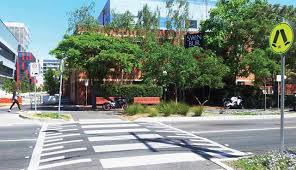
Photo credit: Vision Australia
-
Traffic signals
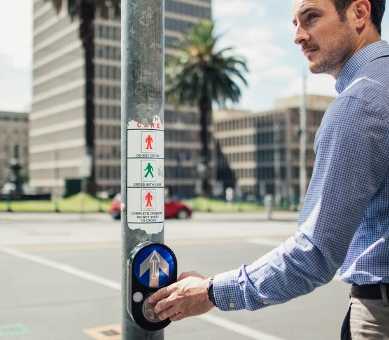
Photo credit: Sine Lawyers
-
Pedestrian refuge
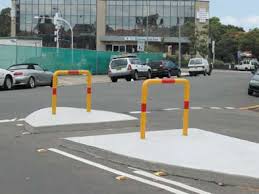
Photo credit: Roads and Traffic Authority
Pedestrian crossings, traffic signals and pedestrian refuges are the safest places to cross the road. At these locations signs and other reminders let drivers know pedestrians may be crossing the road in the area. Hold your child’s hand at all times when crossing the road.
Tips for crossing the road at a pedestrian crossing:
-
Pedestrian crossings are marked with white stripes, often known as zebra crossings.
-
Make eye contact with the driver to ensure that they have seen you.
-
As you cross, be alert. Scan left to right and keep eye contact with drivers as you approach the far side of the crossing.
Tips for crossing the road at traffic signals:
-
Press the button at the traffic signal.
-
Always wait for a green walking person to be displayed.
-
Make sure all traffic is stopped before starting to cross. Be careful of cars turning left and right at intersections.
-
Stay alert as you cross. Look, listen and think as you continue to cross.
-
If flashing red person is displayed while you are already crossing, keep going.
-
Do not start to cross the road when there is a red person displayed. Press the button and wait.
Tips for crossing the road at a pedestrian refuge:
-
Drivers do not need to stop for you. You need to select a safe gap in traffic.
-
This type of crossing lets you cross in two stages, allowing you to wait in the middle of the road if you need to
-
You need to ‘Stop, Look, Listen and Think’ before stepping off the kerb.
-
Remain alert at all times as you cross the road.
每次横过马路之前,始终记得问自己这个问题:从这里过马路安全吗?
选择最安全的地点穿越马路意味着你能平安抵达目的地。
横过马路最安全的地点是:
-
人行横道线

图片来源: Vision Australia
-
行人交通信号灯路口

图片来源: Shine Lawyers
-
行人安全岛

图片来源: RTA
人行横道线、行人交通信号灯路口和行人安全岛是你通过路口或横过道路最安全的地方,因为这里有交通标志以及其他警示牌,提醒机动车驾驶员注意前方可能有行人穿越。如果有儿童一起过马路,你要始终记得拉住他们的手。
走人行横道线过马路的提示:
-
人行横道线俗称“斑马线”,是一组白色条纹的交通警示标志。
-
你在过马路时要与机动车驾驶员有目光接触,确保他们也看见了你。
-
行走过程中应该时刻保持警觉,注意往来车辆,先看左边再看右边;接近马路另外一边时与机动车驾驶员保持目光接触。
行人交通信号灯路口过马路的提示:
-
按行人交通信号灯按钮。
-
始终记得要等待交通信号灯显示“小绿人”标志后才可起步。
-
确保左右两边车辆都已完全停车后才迈出第一步;警惕十字路口左转和右转的车辆。
-
行走过程中应该时刻保持警觉,始终要记得“看!听!想!”。
-
过马路过程中如果看见交通信号灯转为显示“小红人”标志并开始不断闪烁,你应该继续前行。
-
当交通信号灯显示“小红人”标志时切勿开始过马路。按交通信号灯按钮,然后耐心等待。
利用行人安全岛过马路的提示:
-
由于机动车驾驶员无须为你停车,因此你必须选择在行驶车辆之间出现足够安全的间隙时才过马路。
-
行人安全岛这类过街设施让你分两个阶段横过道路。你有需要时可在道路中央的安全岛上等候。
-
从行人道上迈出第一步时,你始终要记得“停!看!听!想!”这几个步骤。
-
行走过程中应该时刻保持警觉。
도로를 건널 때는 어디에서 횡단할 지를 계획해야 합니다. 안전한 장소입니까?
가장 안전한 방법을 골라야만 도착지까지 무사히 도착할 수 있습니다.
도로를 횡단하는 가장 안전한 장소들은 다음과 같습니다:
-
횡단보도

이미지 출처: Vision Australia
-
교통 신호

이미지 출처: Shine Lawyers
-
보행섬

이미지 출처: RTA
횡단보도, 교통 신호 및 보행섬은 도로를 건너는 가장 안전한 장소입니다. 이 장소들은 신호 및 기타 경고들을 통해 운전자들에게 보행자가 해당 구역에서 길을 건너고 있을 수 있음을 알려줍니다. 항상 아이들의 손을 잡고 길을 건너세요.
횡단보도에서 길 건너는 방법:
-
횡단 보도는 흰색 줄무늬로 표시되어 있으며, 얼룩말 무늬 횡단보도로 잘 알려져 있습니다.
-
운전자와 눈을 마주쳐 자신을 보았는지 확인하십시오.
-
길을 건너는 중에는 경계하세요. 횡단보도 건너편으로 접근하며 왼쪽에서 오른쪽으로 살펴보고 운전자와 시선을 맞추십시오.
교통 신호에서 길을 건너는 방법:
-
교통 신호에서 버튼을 누릅니다.
-
항상 초록색 보행자 신호가 표시되기를 기다리세요.
-
건너기 전에는 모든 차량들이 멈췄는지 확인하세요. 교차로에서 좌우로 회전하는 차량들을 주의하십시오.
-
건너는 동안 경계를 유지하세요. 계속 건너가면서 보고, 듣고, 생각하세요.
-
이미 건너고 있는 중에 빨간색 보행 신호가 표시되면 계속 가십시오.
-
빨간색 보행 신호가 표시되어 있을 때는 길을 건너기 시작하지 마십시오. 버튼을 누르고 기다리세요.
보행섬에서 길을 건너는 방법:
-
운전자들이 보행자들을 위해 정지할 필요가 없습니다. 보행자는 차량 교통의 안전한 공백을 선택해야 합니다.
-
이 횡단 방식은 보행자가 2단계에 걸쳐 길을 건널 수 있게 하여, 필요시 길 중간에서 기다릴 수 있도록 해줍니다.
-
도로 경계석에서 내려서기 전에는 ‘멈추고, 보고, 듣고, 생각’해야 합니다.
-
길을 건너면서 항상 경계를 유지하십시오.
In 2016, alcohol was a contributing factor in 2 per cent of all crashes in the City of Canada Bay. Drink driving is an offence with large fines and loss of demerit points applying in New South Wales. For more information, please refer to the TfNSW guide to offences and penalties.
Know your limit:
Your Blood Alcohol Concentration (BAC) is the amount of alcohol you have in your system in grams of alcohol per 100 millilitres of blood. A BAC of 0.05 means you have 0.05 grams (50 milligrams) of alcohol in every 100 millilitres of blood.
What is a standard drink?
A standard drink is a measure of alcohol that helps people monitor their level of alcohol consumption.
All the drinks shown are different sizes but each of them has about 10 grams of alcohol which is the equivalent of one standard drink. The drinks are different sizes because some are stronger (have more alcohol) than others.
Please note: a glass of wine is often poured in amounts greater than a standard drink. A wine glass is misleading and can typically hold 1.5 to 1.8 standard drinks.
For further information please refer to the NSW Health Alcohol information sheet here.
Plan B:
Don’t drink and drive. You need to plan ahead to get home safely after a night out – if you’ve been drinking, don’t drive. Make a positive choice to get home safely the next time you are out drinking.
Drink driving is one of the biggest causes of death and injury on NSW roads. Men make up 87 per cent of drink drivers in fatal crashes. In 2016 where alcohol involvement was known, alcohol was a contributing factor in 814 road crashes in New South Wales, 51 of those fatal. Out of all fatal crashes that occurred on New South Wales roads in 2016, 42 per cent took place on Thursday, Friday and Saturday nights.
Managing alcohol consumption:
- Either drink or drive, never both
- Arrange your transport home the day before your night out
- Separate taxi money from spending money in your wallet
- Set up an ‘emergency call’ with a friend or family member who will pick you up if you change your mind about drinking
- Host your party responsibly. Offer food with alcohol, offer guest to stay the night, or help them get a taxi home
- Always allow guests to set their own drinking pace
- Respect a person’s choice of a sober night out.
The effects of alcohol are wide ranging and impossible to avoid. After a big night out you may still have alcohol in your system for much of the next day. Getting back to zero takes time. After a heavy night of drinking, it can take more than 18 hours for your BAC to get back to zero. Click here for more information.
Case study:
Did you know?
- Fatigue is one of the big three killers on NSW roads
- Fatigue-related crashes are twice as likely to be fatal – drivers who are asleep can’t brake
- In 2016, fatigue related crashes increased by 45 per cent to 1,229 on New South Wales roads, which is 466 more than alcohol related crashes for the same time period.
- Being awake for about 17 hours has a similar effect on performance as a blood alcohol content (BAC) of 0.05.
Fatigue-related crashes can happen on any trip no matter how long or short or what time of day. It’s important to think about how tired you are before driving, recognising the early warning signs when driving and know what to do to avoid driving tired.
Tips to avoid driving tired:
Before you drive, consider the following:
- Get a good night’s sleep
- Avoid driving at night when your body will naturally want to sleep
- Arrange to share the driving
- Avoid long drives after work
- Plan to take regular breaks from driving (use rest areas). Click here to see where the NSW rest areas are located to help plan your trip (identified by the green icon on the map)
- Catch a cab or public transport
- Ask someone for a lift
- Find out if any medicine you are taking may affect your driving
- Know what the early warning signs of fatigue are.
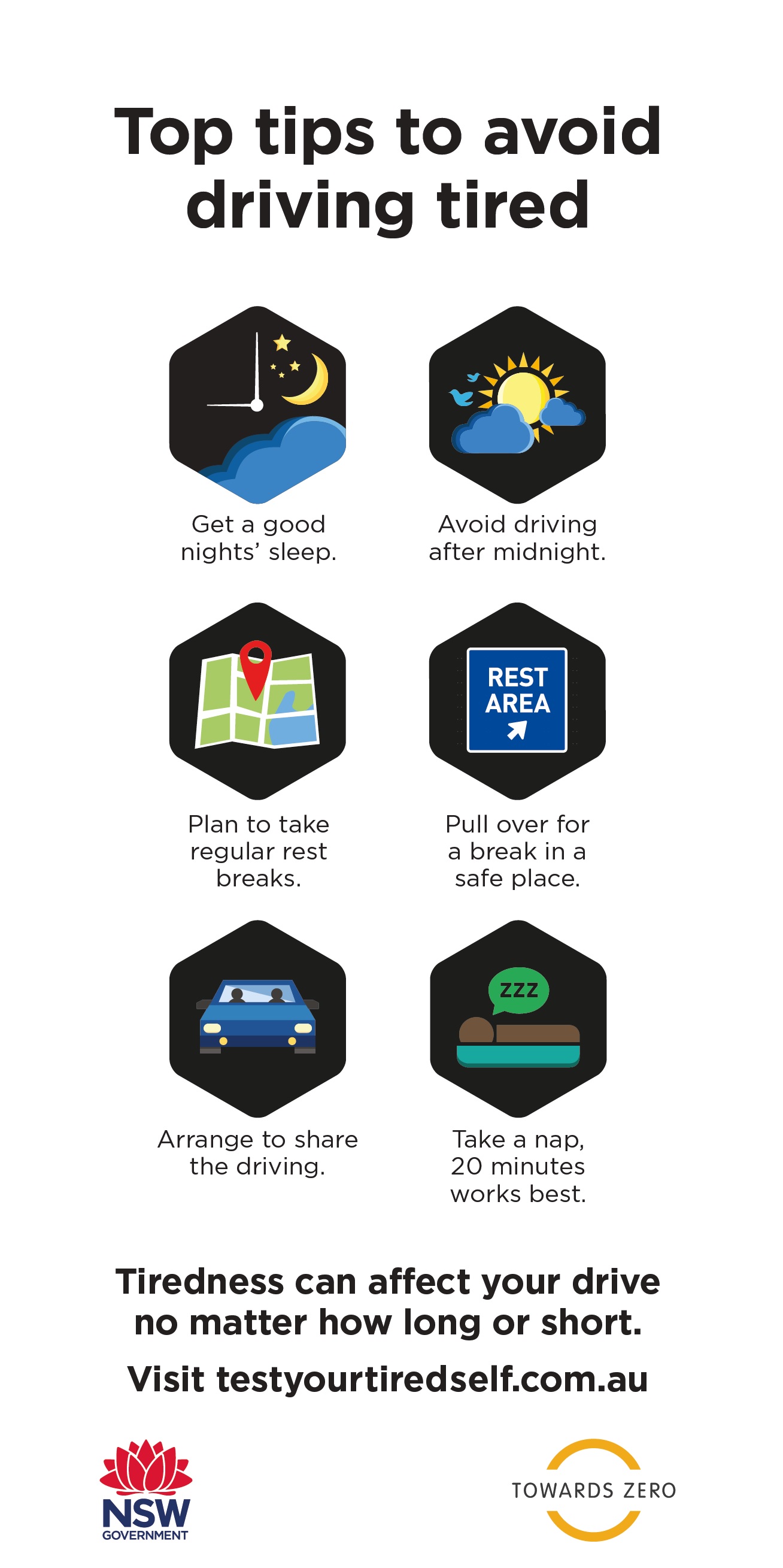
Click to‘Test your tired self’ here.
If you feel tired when driving, consider the following:
- Pull over for a break in a safe place
- Pull over for a nap (20 minutes works best)
- Swap drivers if you can
- Stop for a coffee if you’re on a short drive. Be aware that the effects of caffeine won’t help for long and won’t work for everyone. Caffeine is not suitable for some people and can be harmful. Limits on the daily consumption of caffeine are recommended
- Even if you don’t feel tired, take regular breaks to avoid becoming tired.
Driver Reviver sites:
Did you know that the Driver Reviver program operates throughout Australia during school holidays and over long weekends to reduce fatigue-related crashes on our roads?
Click the above logo to see where the NSW Driver Reviver Programs are located to help plan your trip (identified by the yellow icons on the map).
Related links:
- The dangers of having a microsleep
Council’s Parking Enforcement Team play an important role in creating a safe and accessible environment for both pedestrians and motorists. The team is most active around schools and shopping precincts to protect children and assist businesses with parking turn-over.
Please read our Pocket Parking Guide below for more information about:
- Why rangers have a zero tolerance approach around school zones
- Options when you receive an infringement notice
- Explanation of parking signs and offences (e.g. drivers are not permitted to park their vehicle within 10m of an intersection).
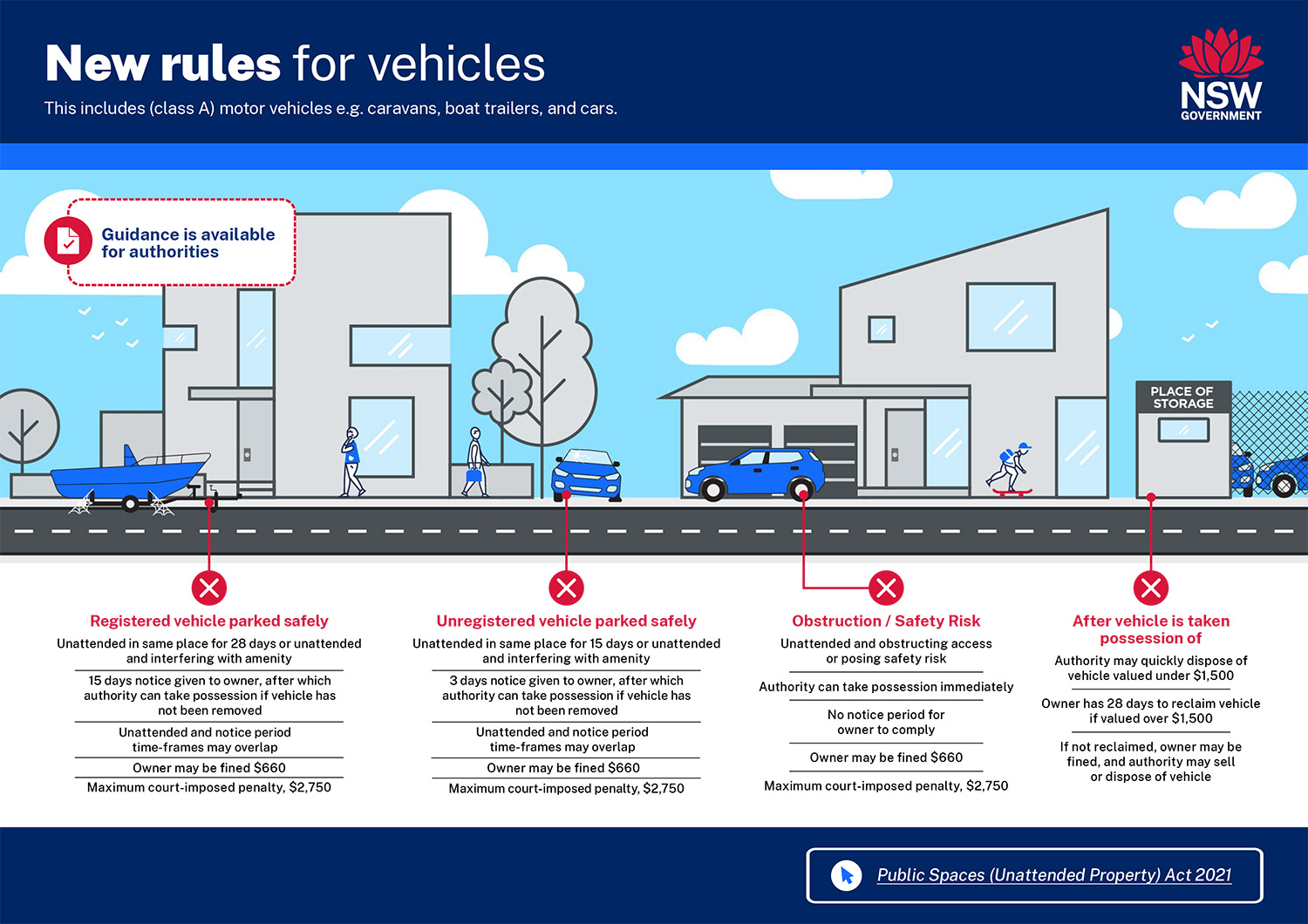
More information
More than 1500 pedestrians are hit on NSW roads each year. Even if you are familiar with the road, it’s vital to take an extra moment to look out before you step out, and always choose the safest place and time to cross.
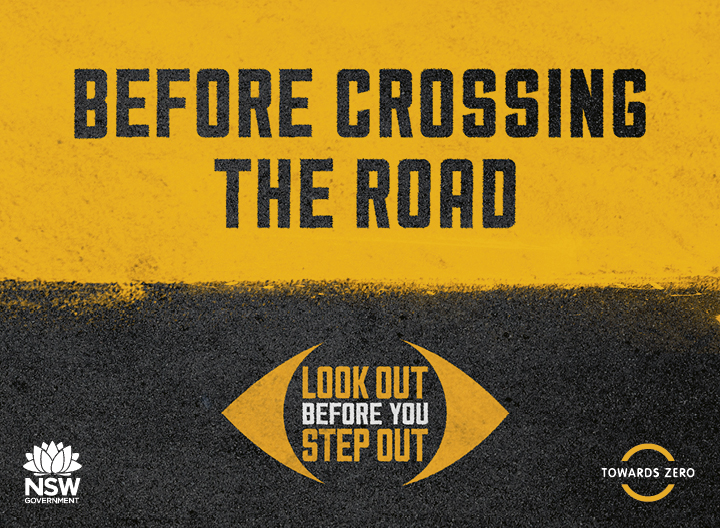
Advice for pedestrians:
- Look before you cross. Just because someone else decides to cross, doesn’t mean it’s safe for you
- Unplug your earphones and put away your phone
- Never assume that an approaching vehicle can see you, or will stop for you – wait until all vehicles have stopped before you step off the kerb
- Avoid crossing between parked cars or at the front or back of buses and large vehicles
- Speed humps are not designated as pedestrian crossings and are an unsafe place to cross the road. Drivers are not anticipating a pedestrian to be crossing at this point and do not need to stop. Choose a marked pedestrian crossing or a signalised crossing to cross the road safely
- At intersections, check for turning vehicles before you leave the kerb, and while you are crossing the road
- Wear bright, light coloured clothing at night or in reduced visibility conditions.
Where is the safety place to cross a road?
- Whenever possible, cross at a pedestrian crossing, traffic signal or pedestrian refuge.
- Make sure you have a clear view of approaching traffic, and where drivers can see you.
- If you cannot cross the whole road in one attempt, wait on the pedestrian refuge or median strip.
Even if you are familiar with the road, it’s vital to take an extra moment to look out before you step out, and always choose the safest place and time to cross.
Advice for drivers:
As a rule, drivers must give way to pedestrians crossing the road into which their vehicles are turning. Drivers must also give way to pedestrians if there is a danger of colliding with them, even if there is no marked pedestrian crossing. As a vehicle’s speed increases, so does the risk of injury or death to pedestrians hit in a crash. Follow the following helpful tips to assist driving safely in the City of Canada Bay
- Slow down on roads where there are likely to be a lot of pedestrians, especially near schools and shopping centres; near hotels there are likely to be pedestrians who have been drinking
- Be aware that pedestrians are hard to see at night and in poor weather
- Don’t assume that a pedestrian has seen you and will wait for you to go past
- Be mindful that vulnerable pedestrians may need extra time to cross – children can be difficult to see and may act unpredictably
Pedestrian safety for children
The best way to keep young children safe from traffic injuries is to hold their hand or hold them close. By holding onto children, you can stop them running into dangerous situations. Even though children may complain about holding hands, by making family rules about safe walking, explaining them and reinforcing safe behaviour, you will help children learn how to become safer pedestrians.
As a parent or carer, you can assist in teaching your child to safely cross the road by discussing these helpful questions and tips with your child when crossing the road:
- Where it is safe to walk and cross the road?
- When it is safe to walk and cross the road?
- What to look for
- What to listen for
- The need to stop and wait at the side of the road before crossing
- The need to keep checking until they are safely across the road or the driveway
Motorised Wheelchairs
A motorised wheelchair user is generally considered to be a pedestrian, and must comply with the NSW Road Rules that apply to pedestrians. For more information regarding motorised wheelchairs and scooters please clink here
Useful links:
Skateboards, foot scooters & rollerblades
Kids and Traffic – pedestrian safety for early childhood education
Safety Town – pedestrian safety messages for parents with infants and primary aged school children
School Zones: Understanding the Rules
School zones
40km/h school zones help protect children on their way to and from schools at the times and places where they are often in high numbers. This lower speed limit reduces the risk and potential severity of a crash. School zone signs, dragon’s teeth road markings and flashing lights improve the visibility of school zones. Click the video below to brush up on your school zone road rule knowledge.
School zone times
Most school zones operate from 8am to 9:30am and from 2:30pm to 4pm. However, there are a small number of non-standard school zone times in NSW which are identified by red/orange school zone signs showing the times when the school zone operates.
School zone days
40km/h school zones are in force on all days which are not a weekend, a public holiday or a publicly notified school holiday for government schools. The table below identifies the days that school zones are in force in 2022.
School zone days (as shown above) include school development days, also known as student-free days, because some students may attend their school on these days.
Protecting our children
Motorists must drive no faster than 40 km/h through school zones. Increased fines and demerit points apply for certain school zone offences, with illegal use of mobile phones and speeding among those included in double demerit periods. The TfNSW website has information on fines and demerit point offences.
The Keeping our kids safe around schools resource from The Centre for Road Safety provides valuable information for parents and children to improve road safety around schools.
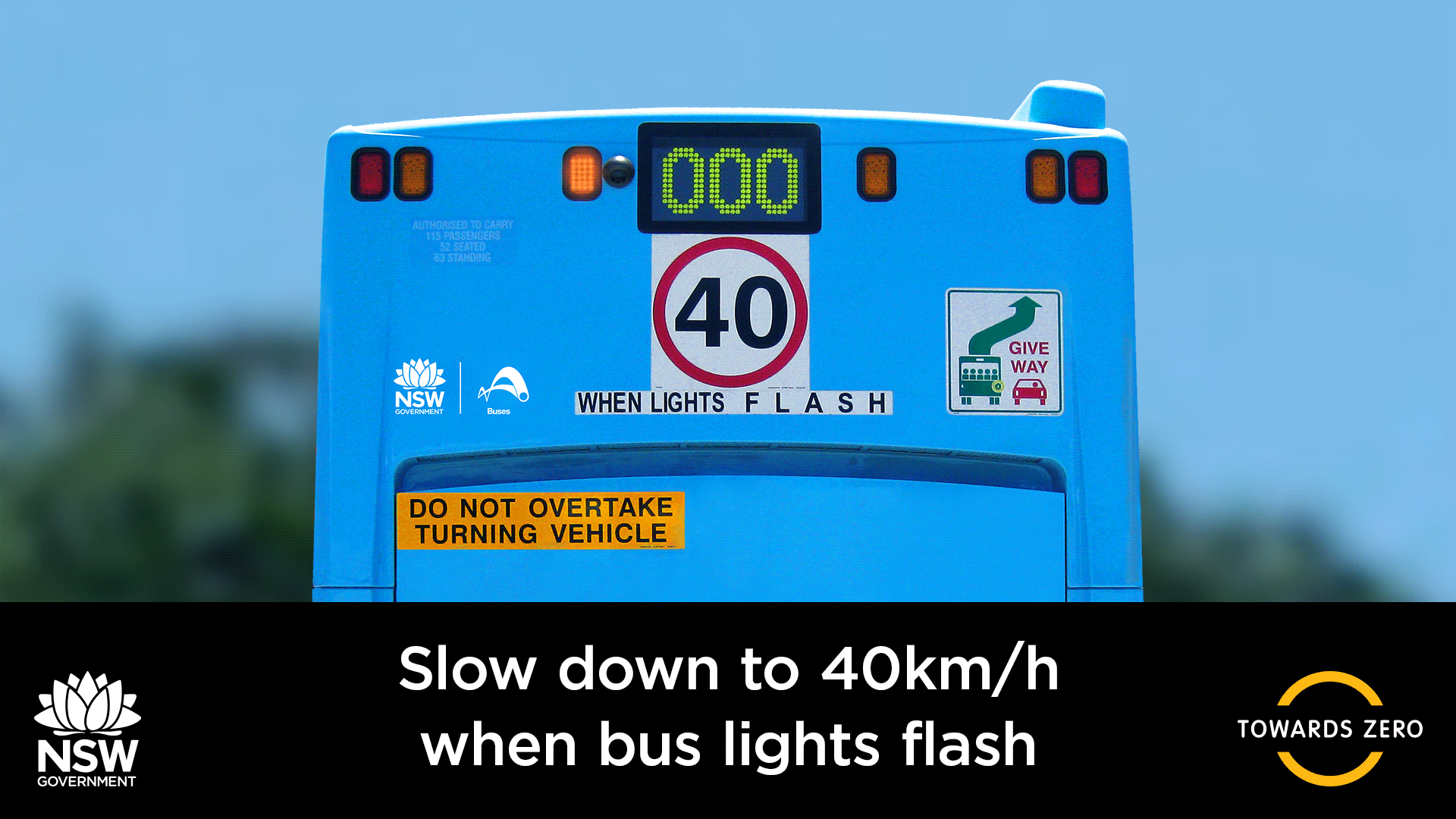
Helpful tips
Do you know the road rules and parking signage in and around your School Zone?
The City of Canada Bay in partnership with the TfNSW has compiled a helpful poster for your school community. Download the flyer below for more information:
School crossing supervisors
School crossing supervisors are provided to increase mobility and safety around schools by enhancing the performance of pedestrian traffic facilities.
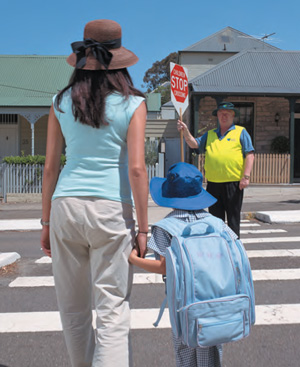
The School Crossing Supervisor program is a state-wide program that contributes to the safety of infants and primary school students. School crossing supervisors help students use the crossings on roads adjacent to or nearby schools.
Supervisors are provided where Transport for NSW (TfNSW) strict guidelines and criteria are met. TfNSW will assess sites to determine their eligibility. School principals can make a request for a school crossing supervisor by using our online form.
What can I do to help?
As a shared responsibility, parents, teachers and school students all play a vital role in remaining safe around schools. To help encourage the road safety message, the NSW Government has complied useful Road Safety Education Programs which can be delivered in the classroom or at home. Click on the below links to see how you can help educate your child at home to ensure that they remain safe.

Useful links
Related information
Staying safe and independent is important as we begin to age.
Driving can be a basis of getting from one place to another but it can also be a source of independence for most people. Changes were made recently for older drivers regarding their licensing scheme to ensure that a balance of road safety and independence was met.
The licensing changes impacts all license holders 75 years and older with the following requirements now in force to ensure that all drivers are fit to drive. These include:
- An annual medical assessment from the age of 75 years of age and over to be completed by your doctor to retain your licence.
- In addition to the medical assessment, drivers aged 85 years of age are required to pass a practical driving assessment every second year (age 85, 87, 89 etc.) to retain an unrestricted licence. If drivers no longer wish to hold an unrestricted drivers licence, then they can opt for a modified licence without the need for a practical driving assessment.
NOTE: A modified licence allows you to drive certain distances within your local area to access the services you need, such as shopping, community activities and medical appointments.
.jpg)
If you wish to continue with an unrestricted licence you have two options when taking the on-road driving assessment:
- You can go to a Roads and Maritime testing centre for the assessment with a testing officer up to three times at no charge.
- You can take the assessment from home with an accredited driving instructor and pay a fee, with no limit to the number of times you can be assessed within a two-month period.
The on-road assessment must be completed before you turn 85. Roads and Maritime will send you a letter with more details about the assessment and the option to take a modified licence two months before you turn 85.
You can find out more about older driver licensing in NSW here
Medical conditions that affect driving
All drivers, regardless of their age, must inform Roads and Maritime if they have any medical conditions that could affect their ability to drive safely.
Reporting your condition does not mean you have to give up your licence. Roads and Maritime Services will request you visit your doctor to have your fitness to drive assessed. During the appointment, talk to your doctor about your driving needs. You may qualify for a conditional licence that allows you to continue driving if you undergo periodic medical assessments.
Giving up your licence
If you no longer need your licence, you can hand it in at any time. For identification, you will be offered a free NSW Photo Card when you return your licence to a Service NSW Centre. If you don’t need the card, simply post your licence to a registry or service centre with a short letter about your decision to stop driving.
If you’re worried about someone’s driving
If you’re concerned about a person who is showing changes in their driving abilities, or know of a person who has not reported a medical condition that affects their ability to drive safely, you can inform Roads and Maritime Services at your closest Service NSW Centre.
Useful links:
The City of Canada Bay has temporary speed radar displays at various locations across the Council area. This interactive technology alerts motorists to their speed of travel and provides visual cues through LED displays to encourage safe driver behaviour (a smiley face) or remind motorists to slow down (a sad face).
These displays are installed for varying durations with many regularly moved between a number of identified locations to maximise their effectiveness at reducing vehicle speeds in the area.
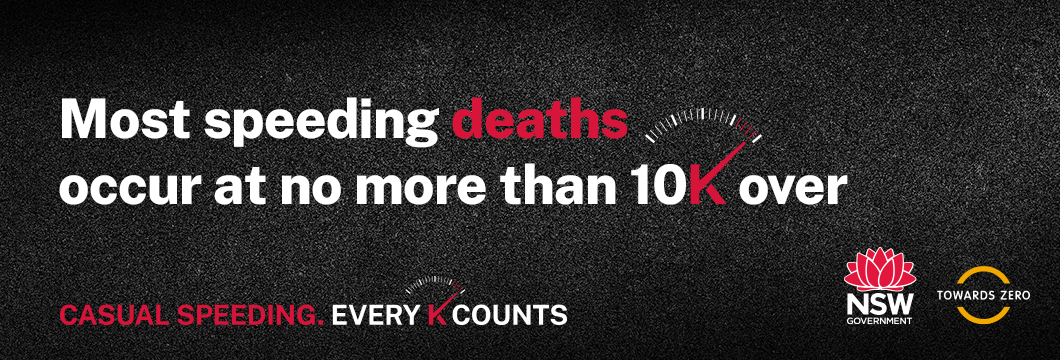
Speeding - which encompasses excessive speed (driving above the speed limits) or inappropriate speed (driving too fast for the prevailing conditions) is recognised as a major contributory factor in both the number and severity of traffic crashes.
As a vehicle’s speed increases, so does the distance travelled during the driver’s reaction time (reaction distance) and the distance needed to stop (braking distance).
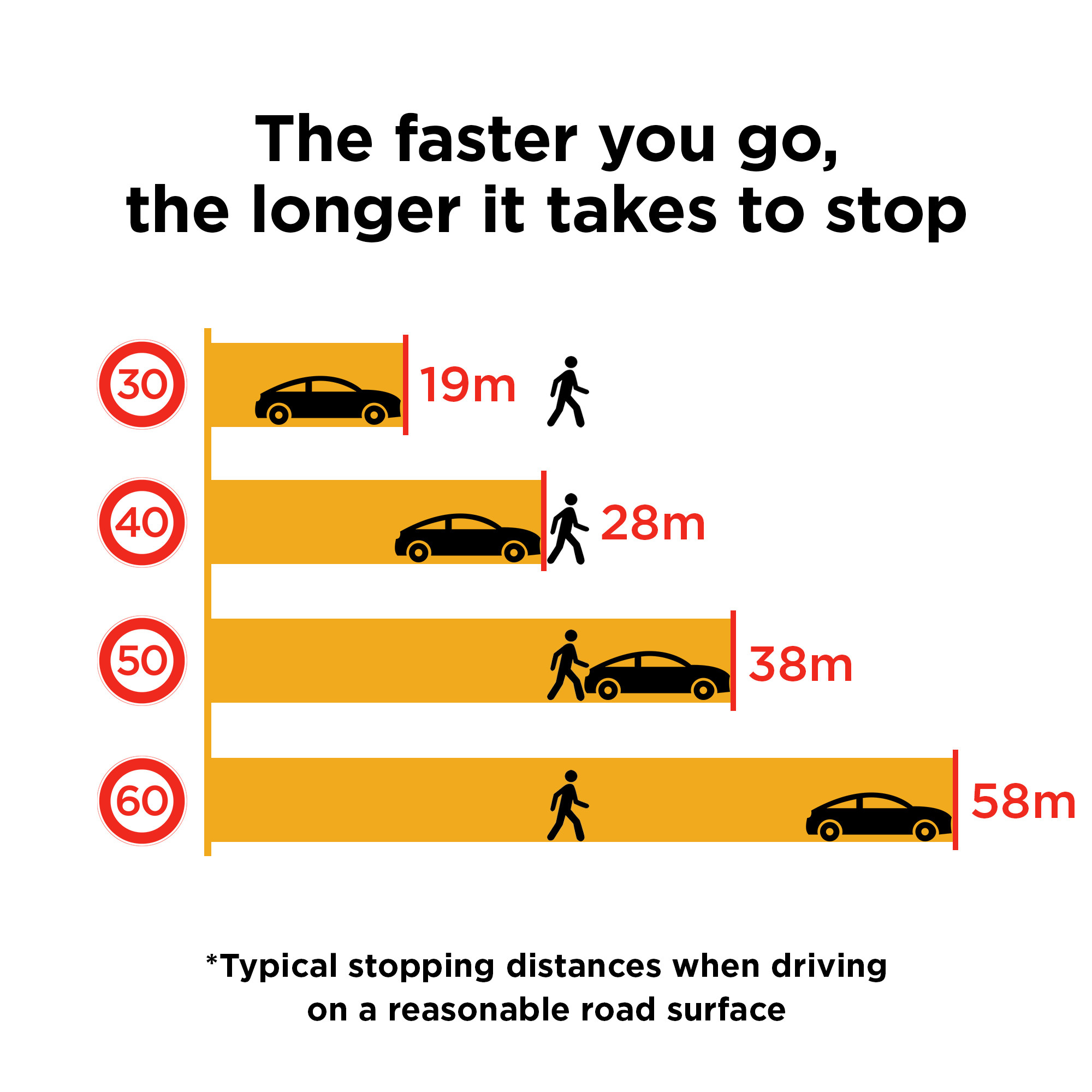
Speed limits are set by Transport for New South Wales (TfNSW) and are intended to reflect the road safety risk to the road users while maintaining the ability of people to easily get to their destination.
Default speed limits:
Where there is no posted speed limit sign, default speed limits apply.
In NSW there are two default speed limits, default urban speed limit for roads in built-up areas (i.e. where there are buildings next to the road or where there is street lighting) and a default speed limit for all other roads.
- Default urban speed limit is 50 km/h
- Default speed limit for all other roads is 100 km/h.
High pedestrian activity:
The maximum speed limit is 40km/h at all times. Changes in the road environment are made to help alert drivers to the lower speed limit and make them aware of the presence of pedestrians moving about or near the road.
This creates a safer road environment for all road users, particularly for pedestrians, cyclists and children.
The City of Canada Bay has worked closely with the Roads and Maritime Services to have High Pedestrian Activity Areas implemented in sections of the following roads:
- Majors Bay Road, Concord
- Henley Marine Drive, Drummoyne
- Roseby Street, Drummoyne
- George Street, North Strathfield
- Mary Street, Rider Boulevard, Walker Street, Rhodes.
Form more information concerning Safe Speed Limits from the Roads and Maritime Service (RMS), please click here.
Speeding enforcement:
Isolated cases of excessive speed is a matter of enforcement. Members of the public can request enforcement by contacting the NSW Police Assistance Line on 131 444. Details such as time of day and day of week when issues most frequently occur can assist them in undertaking targeted enforcement.
If your vehicle is detected by a fixed speed camera, mobile speed camera or a Police Officer and a penalty notice is issued, you will incur a fine and licence demerit points. Learner and P1 licence holders will have their licence suspended for at least three months for any speeding offence.
The Demerit Points Scheme is a national program that allocates penalty points (demerits) for a range of driving offences. The scheme is designed to encourage safe and responsible driving. Along with financial penalties, demerit points provide a strong incentive to drive within the law.
Increased fines and demerit points apply to certain traffic and parking offences committed within operating School Zones. See the NSW Centre for Road Safety website for information about when School Zones are in force.
List of speeding offences and penalties:
See Speeding offences for a list of speeding offences, or you can search demerit point offences.
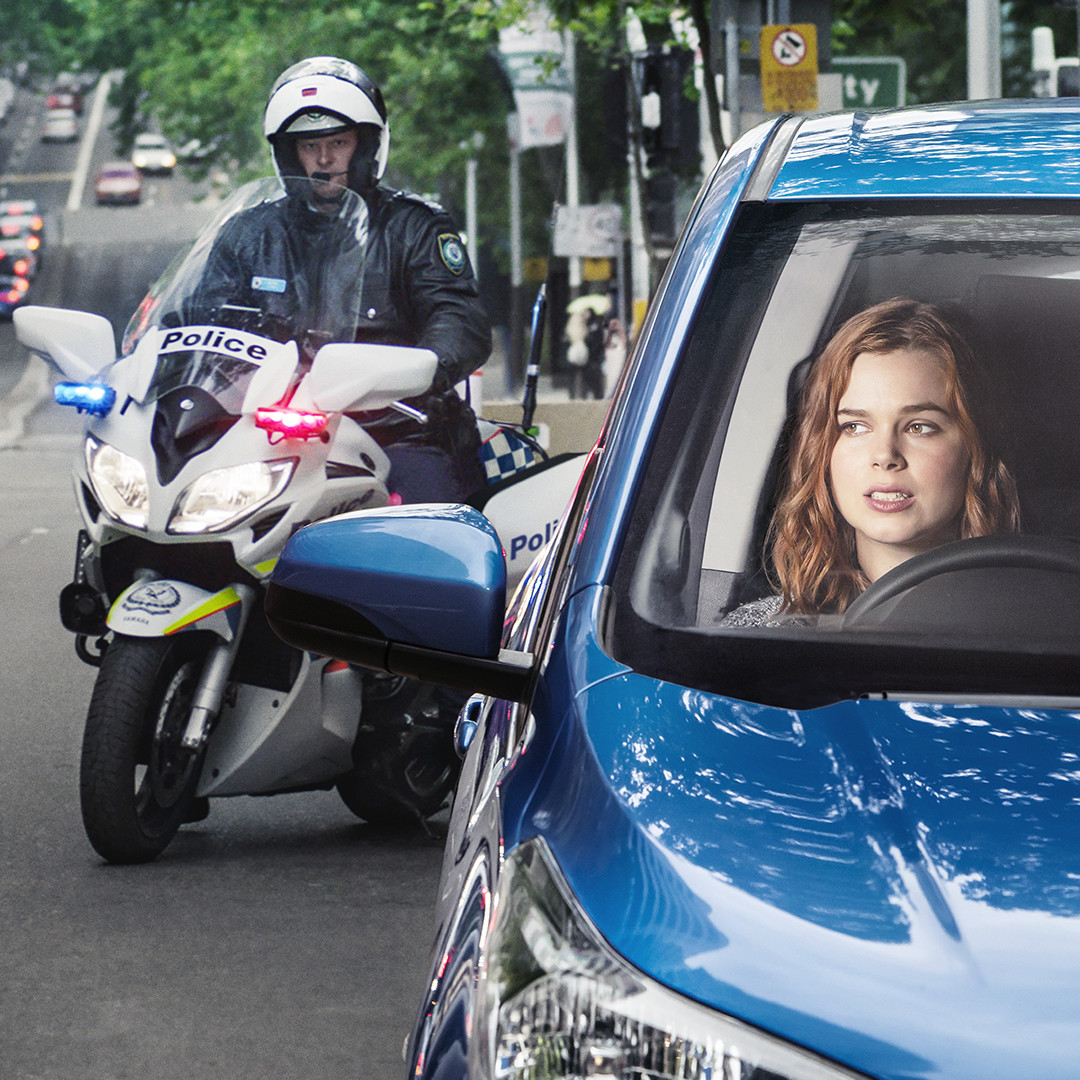
Riding your bike is a convenient, healthy and environmentally-friendly transport option for getting to where you need to go. The City of Canada Bay provides a number of shared paths and bicycle routes to help you enjoy the local surrounds and get to your destination in a timely manner.
.jpg)
When using a roadway, drivers and cyclists share the roads together. Drivers must give bicycle riders at least a metre of space.
In NSW, drivers who pass a bicycle rider must allow a distance of at least:
- 1 metre when travelling speeds of 60km/h or less
- 1.5 metres when travelling speeds of more than 60km/h.
Bicycle riders have the same rights and responsibilities on the road as other road users. They must follow the same NSW Road Rules as someone driving a vehicle. This includes obeying traffic lights and giving other road users right of way. Cyclists must also look out for pedestrians who are walking on footpaths and crossing the road.
Safety tips for cyclists
- Make sure you wear a helmet that meets Australian safety standards
- Wear appropriate clothing that is visible, comfortable and is unlikely to get caught in the chain or gear
- Equip your bike with a warning bell and front and rear lights and make sure they are regularly charged
- Look after your bike with regular servicing and check that tyres are inflated and brakes are working before setting off.
For more safety tips click here.
If you are new to riding, or returning to riding after a long absence, then you need to consider several things such as, choosing the right bicycle and equipment, how you should maintain your bicycle and how to ride responsibly.
Cycling on a footpath
Since 23 July 2018, children under 16 years of age are allowed to ride on a footpath. Allowing children under the age of 16 on the footpath will help keep them safe until they have the skills, decision making and knowledge of the rules to ride safely on the road.
An adult rider who is supervising a bicycle rider under 16 may also ride with the young rider on the footpath. Children aged 16 or 17 can ride on the footpath, when accompanied by a child under 16 and a supervising adult.
When riding on a footpath, riders must keep left and give way to pedestrians.
_0.jpg)
Shared paths
Shared paths are paths designed for pedestrian and bicycle use. Shared paths are signposted and marked so you can tell if you are meant to share the path with pedestrians.
When riding on a shared path, cyclists must do the following:
- Keep to the left at all times unless it is impractical to do so
- Give way to pedestrians
- Adjust your speed to suit the environment
- Use your bell to signal your presence to other users on the shared path
- Overtake on the right-hand side.
Be particularly careful around young children, older pedestrians and animals who also use a shared path.
E-bikes and power-assisted pedal cycles
This mode of active transport comprises of an auxiliary (electric) propulsion motor which is attached to assist the rider. Under NSW road rules, these are legal if they meet the specific requirements and do not require registration. To find out about the NSW requirements for power assisted pedal cycles please click here.
Bike Week
The City of Canada Bay in partnership with Transport for New South Wales help to promote safe riding and learn to ride initiatives through a range of Bike Week events each year. Watch all the action from Bike Week 2019 in the video below.


